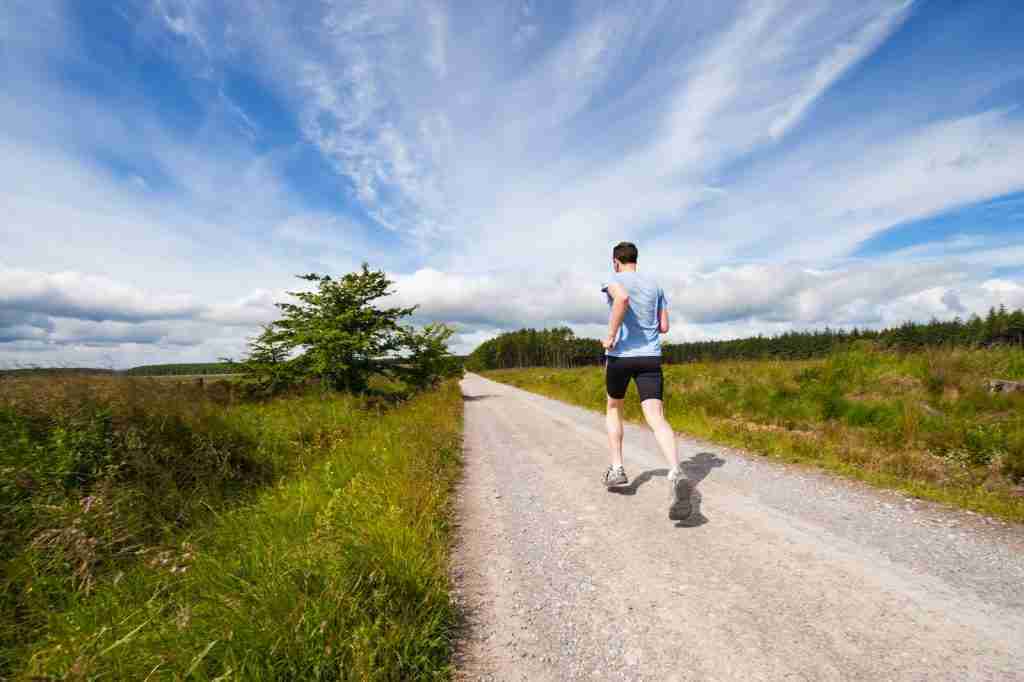24 Fun Facts About Running That You Probably Didn’t Know
1. Running is one of the oldest sports in the world.
Running has origins dating back to ancient Greece. The first recorded Olympic Games in Greece in 776 BC included a footrace approximately 200 meters long.
Over time, running evolved into a popular form of exercise and competitive sport, with various events such as sprints, marathons, and ultra-marathons.
2. The world record for the fastest mile run by a human is 3 minutes and 43 seconds.
This record was set by Hicham El Guerrouj of Morocco in 1999.
This incredible feat required an average speed of over 16 miles per hour, and it still stands as the current world record.
3. The fastest woman to run a marathon is Paula Radcliffe.
Paula Radcliffe is a British runner who set a time of 2 hours, 15 minutes, and 25 seconds at the 2003 London Marathon.
This impressive record has yet to be broken and cemented Radcliffe’s status as one of the greatest female marathon runners ever.
4. Running can help improve brain function and boost creativity.
Studies have shown that running can increase blood flow to the brain, improving cognitive function and better memory.
Running has been linked to increased creativity and can help stimulate new ideas and problem-solving skills.
5. What does 30 minutes of running do?

30 minutes of running can have several health benefits, including improving cardiovascular health, building muscle strength and endurance, boosting mood and reducing stress levels, and burning calories.
It can also help to improve bone density, reduce the risk of chronic diseases such as diabetes and heart disease, and improve overall physical fitness.
6. Running can help reduce the risk of heart disease.
Running can help reduce the risk of heart disease by improving cardiovascular health. Regular running can help lower blood pressure, reduce cholesterol levels, and strengthen the heart muscle.
This can lead to a reduced risk of heart attack, stroke, and other cardiovascular diseases.
7. In the 1904 Olympic marathon, the winner was given strychnine and brandy.
The winner, Thomas Hicks, was struggling in the race and was given a mixture of egg whites, strychnine, and brandy by his trainers to help him push through.
This practice is obviously unsafe and illegal today, highlighting the extreme measures athletes have taken to pursue victory.
8. Running can help improve bone density and reduce the risk of osteoporosis.
Osteoporosis is a condition characterized by weakened bones and an increased risk of fractures. The impact of running stimulates bone growth and helps to increase bone density, making the bones stronger and less prone to injury.
This is especially important for older adults, as osteoporosis becomes more common with age.
9. The Boston Marathon is the oldest annual marathon in the world, first held in 1897.
The race was inspired by the success of the first modern Olympic marathon in 1896 and has since become one of the world’s most prestigious and iconic races.
The course, which starts in the small town of Hopkinton and finishes in downtown Boston, is known for its challenging hills and difficult terrain.
10. How healthy is running?

Running is generally considered a very healthy exercise, with numerous benefits for both physical and mental health.
Regular running can help to improve cardiovascular health, build muscle strength and endurance, improve bone density, reduce the risk of chronic diseases, and aid in weight management. It can also boost mood and reduce stress levels, improving overall mental health.
11. In 1980, Terry Fox ran the Marathon of Hope to raise money for cancer research.
Fox, who had lost his leg to bone cancer, ran a marathon a day for 143 days straight, covering over 3,300 miles across Canada.
His incredible feats of endurance and dedication raised millions of dollars for cancer research and inspired a generation of Canadians to get involved in the fight against cancer.
12. Running can help improve sleep quality and reduce the risk of sleep disorders.
Studies have shown that regular exercise, including running, can help regulate the body’s sleep-wake cycle and improve sleep quality so that you will stop yawning all the time.
Running can also help to reduce the symptoms of sleep disorders such as sleep apnea and insomnia, leading to better overall health and well-being.
13. Running can help improve balance and coordination.
Running can help improve balance and coordination by strengthening the muscles and improving proprioception, which is the body’s sense of where it is in space.
This can be especially important for older adults, who may be at increased risk of falling due to age-related changes in balance and coordination.
14. The first known women’s marathon was held in 1971.
The race, known as the “Mile for Women,” was organized by the Women’s Liberation Movement to protest the exclusion of women from the Boston Marathon.
The race was a success, with 78 women finishing the 26.2-mile course, and helped pave the way for women’s participation in marathons and other endurance events.
15. Running can help improve digestion and reduce the risk of digestive problems.
Running can help improve digestion and reduce the risk of digestive problems by increasing blood flow to the digestive system and promoting the release of digestive enzymes.
Regular exercise, including running, can also help to regulate bowel movements and prevent constipation.
16. The runner’s high is a feeling of euphoria that runners experience during or after a run.

This is characterized by a sense of well-being, happiness, and reduced pain perception.
This is thought to be caused by the release of endorphins, the body’s natural painkillers, and other neurotransmitters that affect mood and emotion.
17. Running can help improve lung capacity and reduce the risk of respiratory problems.
Running is a way of strengthening the respiratory muscles and increasing the amount of oxygen that can be taken in and transported throughout the body.
Regular running can also help improve lung function and reduce the symptoms of asthma and chronic obstructive pulmonary disease (COPD).
18. The treadmill, invented in 1818, was originally a punishment for prisoners.
The 19th-century treadmill was a grueling punishment for prisoners, intended to teach industry. Inmates climbed a wheel, enduring injuries. It started in England in 1818, arrived in New York in 1822, and spread fear among inmates.
In the U.S., it gave way to other tasks, while England abandoned it as too cruel in the late 19th century. Even Oscar Wilde experienced it during his 1895 prison sentence, which affected his health.
19. Running can help improve self-confidence and self-esteem.
Setting and achieving goals, whether running a certain distance or completing a race, can help build self-confidence and a sense of self-worth.
Regular exercise has been shown to have a positive effect on mood and can help reduce symptoms of depression and anxiety.
20. In 1992, Liz McColgan won the New York City Marathon 10 months after giving birth.
Her victory demonstrated the incredible physical and mental strength required to compete at the highest level while juggling the demands of motherhood.
It also highlighted the potential benefits of exercise during pregnancy and postpartum recovery, which can help women maintain their fitness and improve their overall health.
21. Running can help improve overall physical fitness and reduce the risk of chronic diseases.
Regular running can help to increase cardiovascular endurance, build muscle strength, and improve flexibility and balance. It can also help lower blood pressure and cholesterol levels and reduce inflammation in the body.
As a result, running is often recommended as a key component of a healthy lifestyle and is associated with a longer life expectancy and a reduced risk of premature death.
22. The average person burns approximately 100 calories per mile when running.
Running is an effective way to burn calories and lose weight.
The actual number of calories burned can vary depending on a person’s weight, age, and running pace.
23. Running can help reduce stress and anxiety.
Running can help reduce stress and anxiety by releasing endorphins, the body’s natural “feel-good” chemicals. Regular running can also help regulate cortisol, a stress hormone that can negatively affect the body when levels are too high.
Running provides a sense of accomplishment and can help improve self-esteem, contributing to reduced stress levels.
24. What are the tips when running?
When running, it’s important to wear proper footwear and clothing, stay hydrated, warm up and cool down properly, and listen to your body to avoid injury.
It’s also important to vary your routine to prevent boredom, maintain motivation, and set realistic goals to track progress and stay motivated.
Finally, it’s important to prioritize rest and recovery to prevent burnout and promote overall health and wellness.
FAQs
Running has many benefits, including improving cardiovascular health, strengthening bones and muscles, reducing stress, and increasing overall fitness and endurance.
Running can change your body fairly quickly, but the extent of the changes will depend on factors such as your starting fitness level, running frequency and intensity, and diet. Regular running can improve muscle tone, weight loss, and cardiovascular fitness, among other things.
Running can be an effective way to burn belly fat, but it is important to remember that spot reduction (losing fat in one specific area) is not possible. Running, along with a healthy diet and overall exercise routine, can help to reduce overall body fat, including belly fat.
Running can help to strengthen your abdominal muscles, but it is not a guaranteed way to get visible abs. To see the definition in your abs, you need to have a low body fat percentage, which can be achieved through a combination of diet and exercise.
Running can help to tone your butt muscles, especially if you incorporate hill running or other types of challenging terrain. However, it is important to remember that genetics also play a role in the shape and tone of your butt, so the extent of the changes you see may vary. Additionally, incorporating strength training exercises that target the glutes can also be beneficial for toning your butt.







